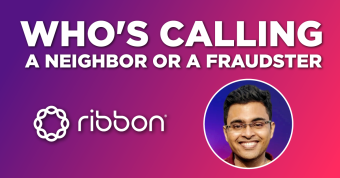Restoring Trust in the Telephone Network by Addressing one of Biggest Problems in the Communications Industry
Over the past year I have worked closely with our partners and service provider customers to address the growing robo and nuisance calling epidemic that impacts us all on a daily basis. In fact, earlier this year Ribbon hosted a summit to address this very issue. It included more than 50 service providers, the Federal Communications Commission (FCC) and other industry organizations. It was a great forum for exchanging ideas about how we can all work together to resolve one of the biggest problems facing the communications industry.
There are so many efforts being undertaken to tackle the robocalling issue. Last week, in what was a major shift in policy, the FCC voted to allow service providers to block robocalls by default, versus the previous longstanding requirement of having their customers opt-in. I posted about this ruling on LinkedIn and received hundreds of comments and questions regarding how this would work, and whether there would be financial implications for customers.
The FCC has made it clear to service providers that they should not charge for this service. In fact, just this week, FCC Commissioner Geoffrey Starks sent a letter to 14 major service providers asking them to confirm that they will begin soon offering this service and to confirm they will not charge for it.
Now to the question about how this will work. There are really two parts to this question. First, it is about determining who exactly is calling you. Today, when you get a call, you have no idea if the number displayed on your phone actually belongs to the person calling you because spoofers can manipulate that information when they place calls to you.
To solve this problem, the industry has developed a solution where the originating service provider verifies the caller’s identification and digitally signs the call. The terminating service provider validates the signature to make sure it hasn't been tampered with, and then presents the number to the called subscriber. In cases where the number has been illegally spoofed, the service provider can block the call, or at least indicate a spoofed number to their customer. The FCC is putting pressure on service providers to implement this digital signature by the end of 2019, and will most likely require it in 2020.
Signing and validating the caller ID really does nothing to determine if the call is a robocall or not, and that brings me to the second part of the question. To make this determination, service providers will use analytics to score each call based on a variety of factors. These factors include: how many calls a given number places within a specified period of time; the reputation of the originating service provider; and the reputation of the company or individual making the calls.
Combining call verification tools with call analytics will go a long way in addressing the robo and nuisance calling issue. The goal is to restore trust in the telephone network, so you can answer your phone again with confidence. And I am confident that we will get there.






